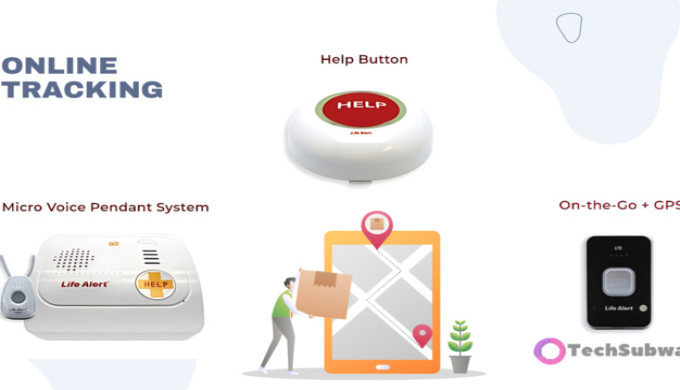
Modern society demands safety as an essential requirement beyond being a comfort item. Life Alert emergency response systems serve as vital safety equipment for elderly people and those who have disabilities and manage chronic health issues. Wearable devices that merge advanced technology with emergency alert systems create the essential difference which determines whether someone will survive.
The article examines how wearable technology operates with medical alert systems to protect lives while discussing new safety features that enhance user freedom and safety reassurance for both patients and their relatives.
The development of wearable technology has experienced remarkable advancement beyond basic fitness monitoring capabilities. Devices currently track heart rate as well as blood oxygen levels and sleep patterns while they also have the ability to detect unexpected falls. Life Alert emergency response features now integrate into these devices which link wellness monitoring to emergency medical response capabilities.
The capabilities of smartwatches along with health applications depend on user involvement or smartphone connectivity. Life Alert emergency response systems deliver dedicated reliable support to users who need it most during critical situations that require immediate voice communication. The famous phrase—“ive fallen and i cant get up ”—became iconic because it reflects a very real risk. The immediate access to assistance by seniors and at-risk individuals leads to better recovery results.
The system connects users with trained professionals at all times through dedicated support while eliminating the need to use smartphone buttons or navigate phone screens.
The term "life alery" corrects the common misspelling while emphasizing the need for rapid alerts. Modern alert systems go beyond pendant buttons. These devices now include automatic fall detection together with GPS tracking and voice-controlled functionality. People who have difficulty moving their hands find the voice-activated feature particularly helpful.
The phrase has struck millions of people because it expresses the terrifying experience of being alone during critical situations. The emergency response systems dispatch help quickly through their medical-grade algorithms which confirm detected falls before sending assistance to emergency services when needed.
Life Alert emergency response systems have transformed wearable devices into more than basic SOS button devices. The following features transform emergency care delivery:
Free Life Alert services and subsidies are examined in this section.
Various insurance programs and veterans` benefits together with senior assistance funds provide free Life Alert services to qualified individuals. Medicaid together with Medicare Advantage plans under certain circumstances provide coverage. The availability of full benefits under different plans varies but medical providers or social service networks can help determine which plans exist.
The 82-year-old independent resident Margaret lives in her rural home. The Life Alert emergency response system activated immediately after she slipped in her kitchen during the late night because her smartwatch failed to notice the fall. Help arrived quickly after her incident which prevented her from developing complications from her hip fracture.
James who survived a stroke has a wearable monitor that detected irregular heart rhythms. The automatic alert sent him straight to his healthcare providers who admitted him to the hospital before his symptoms became severe. The technology works together with human support to produce these outcomes which continue to grow as testimonies to its effectiveness.
Wearable technology will maintain its path toward enhanced intelligence in the future. These devices will soon use predictive health analysis combined with AI-driven alerts to prevent incidents from happening. Voice recognition and gesture-based controls alongside real-time biometric feedback will create new ways to manage daily care as well as crisis situations.
Life Alert emergency response systems will sustain their core value by providing trust alongside their functional capabilities. The assurance of having a real person ready to assist at critical times surpasses what technology can achieve no matter its capabilities.
Selecting the right emergency response system requires these following evaluation criteria:
The advancement of wearable technology continues to narrow the distinction between health tracking features and life-saving capabilities which becomes more effective. Life Alert emergency response systems provide more than a button function because they serve as the fundamental support system for millions of people who want to live safer independent lives.
These systems provide notification beyond their primary function because they offer reassurance and comfort and most importantly deliver protection. The necessity of life alert technology remains fundamental because people search for its name by accident as well as hear the familiar voice saying “ive fallen and i cant get up .”
A product provides safety through its promise rather than being simply a product. Wearable emergency devices chosen correctly deliver promises that were unimaginable during the last ten years.